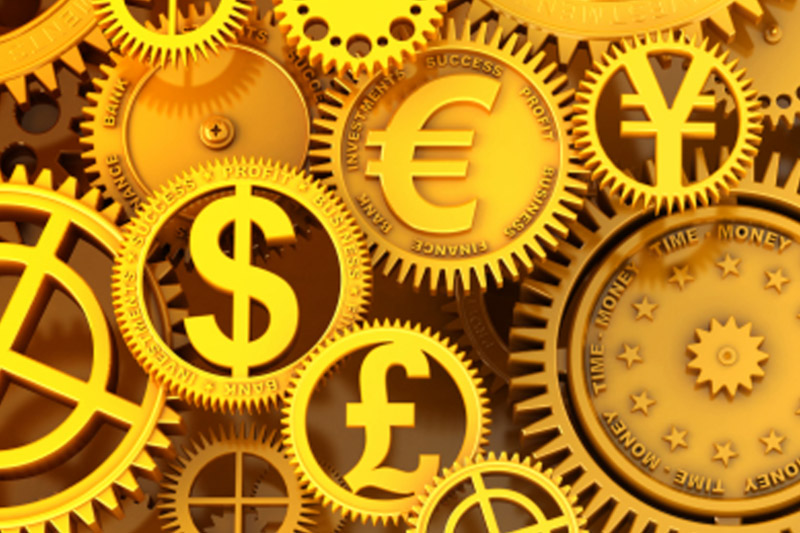Investing.com - The dollar edged higher against the euro and slid lower against the yen on Wednesday as investors remained cautious ahead of a meeting of finance ministers from the G20 nations later in the week.
During U.S. morning trade, the dollar edged higher against the euro, with EUR/USD slipping 0.14% to 1.3435.
Sentiment on the euro was hit after German daily Bild said the European Central Bank is concerned that a further appreciation of the euro could have a negative impact on exports from southern Europe and impair further easing of the region’s debt crisis.
Earlier Wednesday, official data showed that industrial production in the euro zone rose 0.7% in December, beating expectations for a 0.2% increase.
The euro zone was to release preliminary data on fourth quarter gross domestic product on Thursday and industrial production comprises approximately 20% of total economic output.
The dollar edged lower against the yen, with USD/JPY dipping 0.10% to 93.36.
Earlier Wednesday, a G7 official said Tuesday’s statement by the G7 on exchange rates was aimed at indicating concerns over the speed of the yen’s recent depreciation rather than the currency’s current levels.
On Tuesday the G7 reaffirmed a commitment to market-determined exchange rates and said that fiscal and monetary policy won't target exchange rates.
The comments came ahead of a meeting of finance ministers from the G20 later in the week, which was likely to feature discussions on competitive currency devaluations.
Elsewhere, the dollar hit six month highs against the pound, with USD/GBP falling 0.81% to 1.5533.
Sterling fell sharply against the dollar and the euro after the Bank of England’s inflation report said inflation would remain above the 2% target until early 2016 and that economic growth was likely to remain below its pre-crisis levels until 2015.
The greenback pushed higher against the Swiss franc, with USD/CHF rising 0.22% to 0.9191.
The greenback was mixed against its Canadian, Australian and New Zealand counterparts, with USD/CAD dipping 0.01% to 1.0020, AUD/USD climbing 0.39% to 1.0347 and NZD/USD inching up 0.04% to 0.8407.
The Australian dollar found support after a domestic index of consumer sentiment climbed sharply in January, indicating that a series of interest rate cuts are supporting confidence in the economy.
The dollar index, which tracks the performance of the greenback versus a basket of six other major currencies, was up 0.18% to 80.25.
In the U.S., the Commerce Department said retail sales rose by a seasonally adjusted 0.1% in January, in line with expectations.
Core retail sales, which exclude automobile sales, increased by 0.2%, slightly higher than expectations for a 0.1% gain.
During U.S. morning trade, the dollar edged higher against the euro, with EUR/USD slipping 0.14% to 1.3435.
Sentiment on the euro was hit after German daily Bild said the European Central Bank is concerned that a further appreciation of the euro could have a negative impact on exports from southern Europe and impair further easing of the region’s debt crisis.
Earlier Wednesday, official data showed that industrial production in the euro zone rose 0.7% in December, beating expectations for a 0.2% increase.
The euro zone was to release preliminary data on fourth quarter gross domestic product on Thursday and industrial production comprises approximately 20% of total economic output.
The dollar edged lower against the yen, with USD/JPY dipping 0.10% to 93.36.
Earlier Wednesday, a G7 official said Tuesday’s statement by the G7 on exchange rates was aimed at indicating concerns over the speed of the yen’s recent depreciation rather than the currency’s current levels.
On Tuesday the G7 reaffirmed a commitment to market-determined exchange rates and said that fiscal and monetary policy won't target exchange rates.
The comments came ahead of a meeting of finance ministers from the G20 later in the week, which was likely to feature discussions on competitive currency devaluations.
Elsewhere, the dollar hit six month highs against the pound, with USD/GBP falling 0.81% to 1.5533.
Sterling fell sharply against the dollar and the euro after the Bank of England’s inflation report said inflation would remain above the 2% target until early 2016 and that economic growth was likely to remain below its pre-crisis levels until 2015.
The greenback pushed higher against the Swiss franc, with USD/CHF rising 0.22% to 0.9191.
The greenback was mixed against its Canadian, Australian and New Zealand counterparts, with USD/CAD dipping 0.01% to 1.0020, AUD/USD climbing 0.39% to 1.0347 and NZD/USD inching up 0.04% to 0.8407.
The Australian dollar found support after a domestic index of consumer sentiment climbed sharply in January, indicating that a series of interest rate cuts are supporting confidence in the economy.
The dollar index, which tracks the performance of the greenback versus a basket of six other major currencies, was up 0.18% to 80.25.
In the U.S., the Commerce Department said retail sales rose by a seasonally adjusted 0.1% in January, in line with expectations.
Core retail sales, which exclude automobile sales, increased by 0.2%, slightly higher than expectations for a 0.1% gain.
